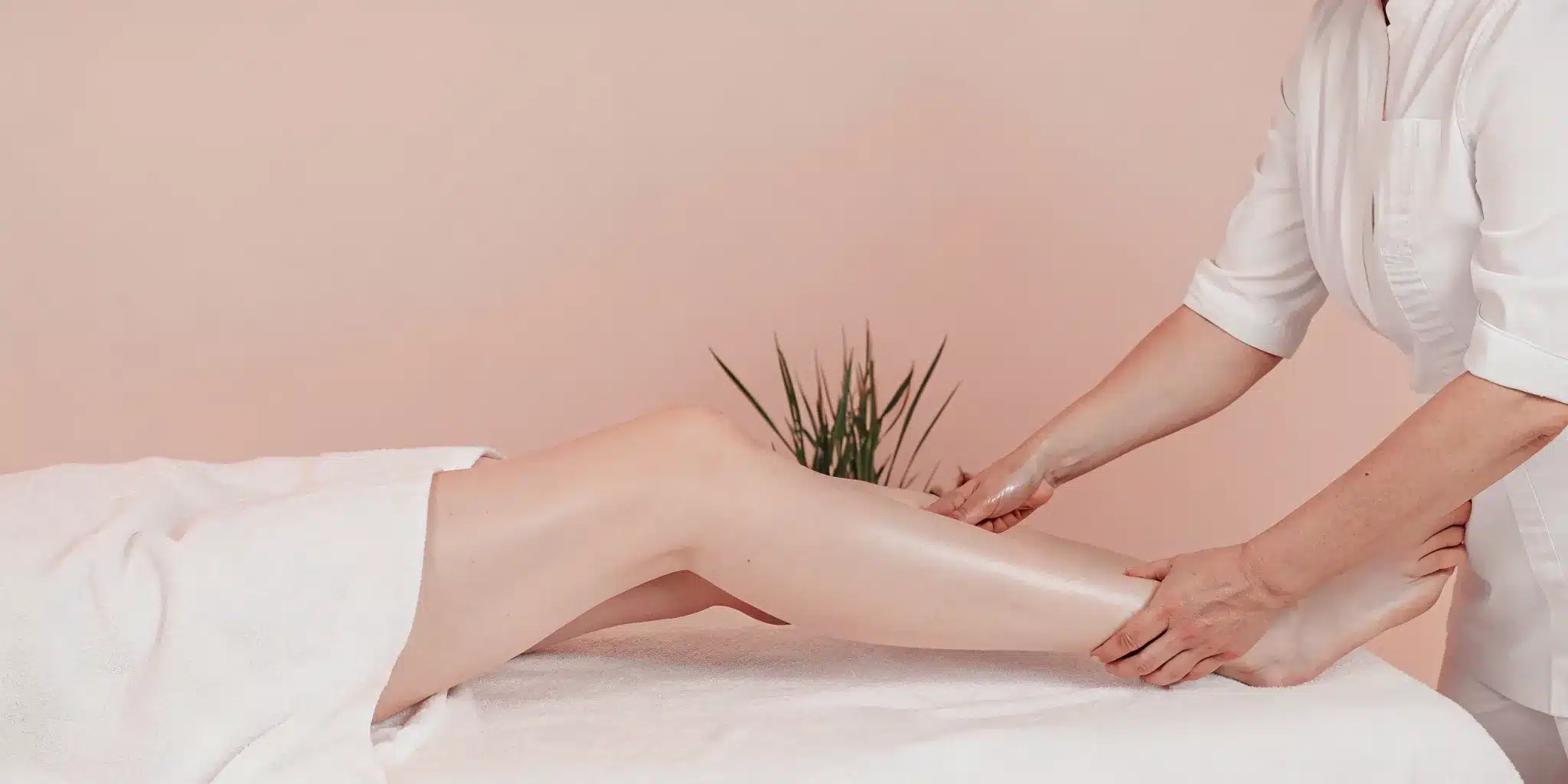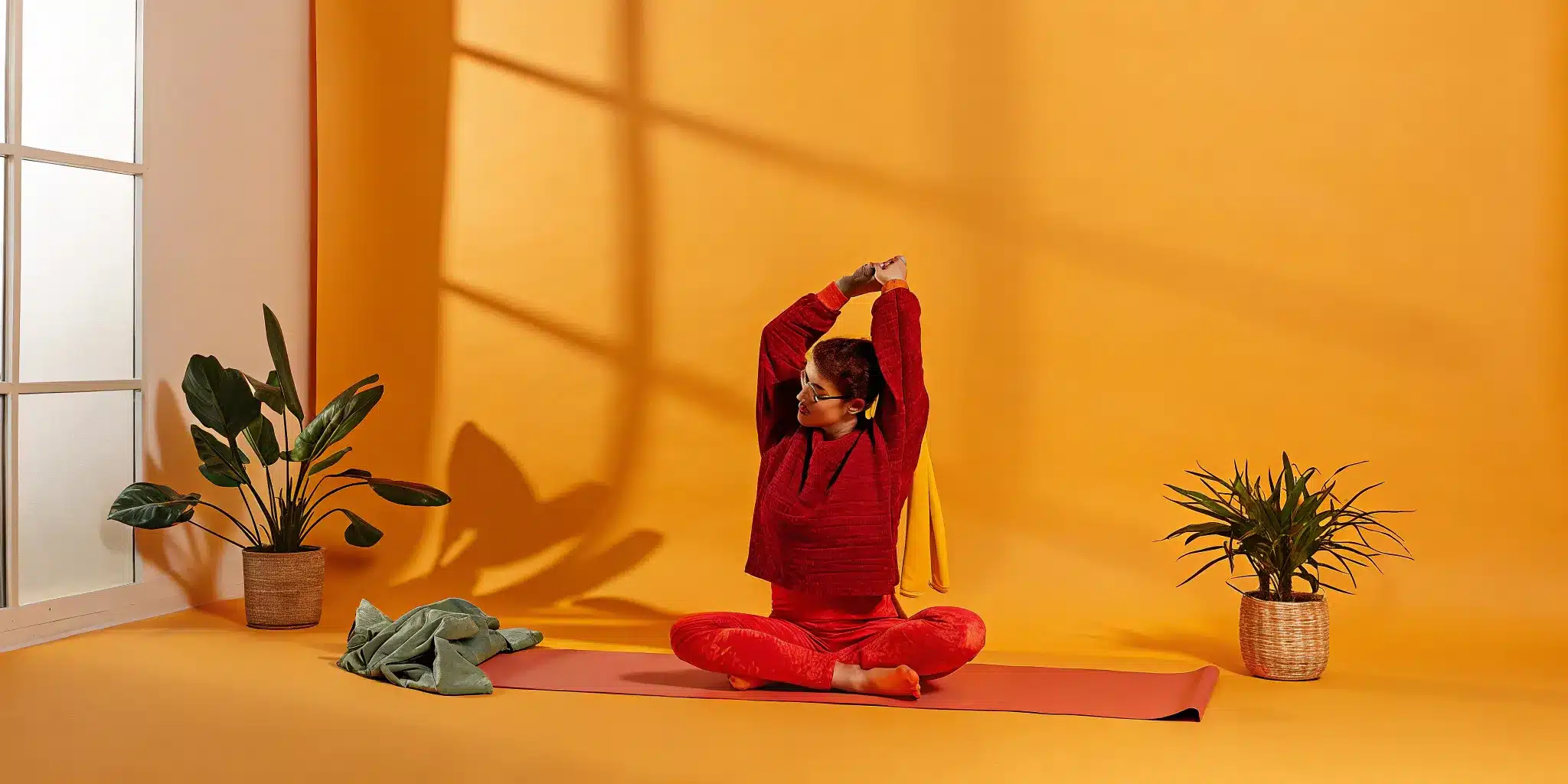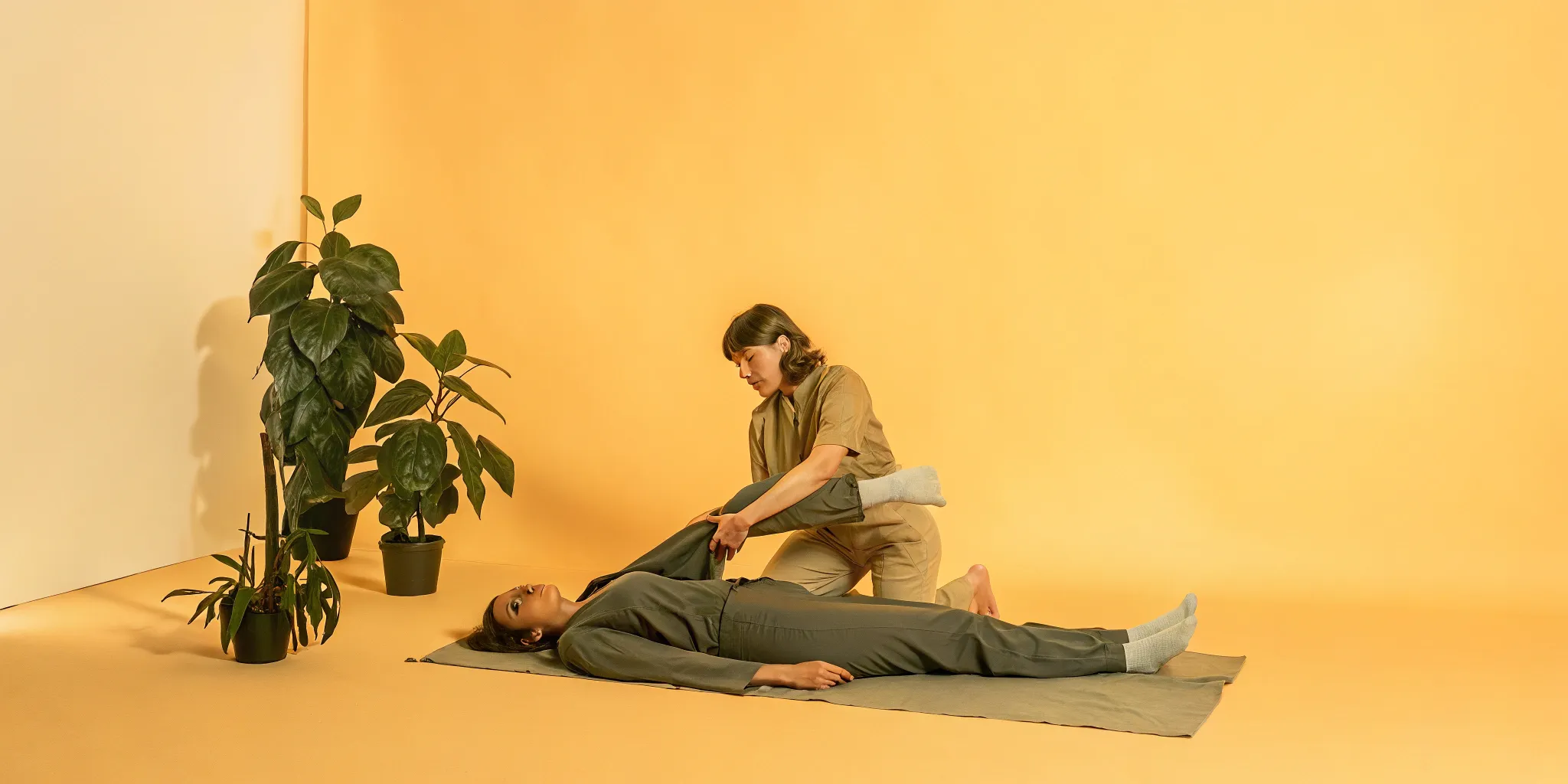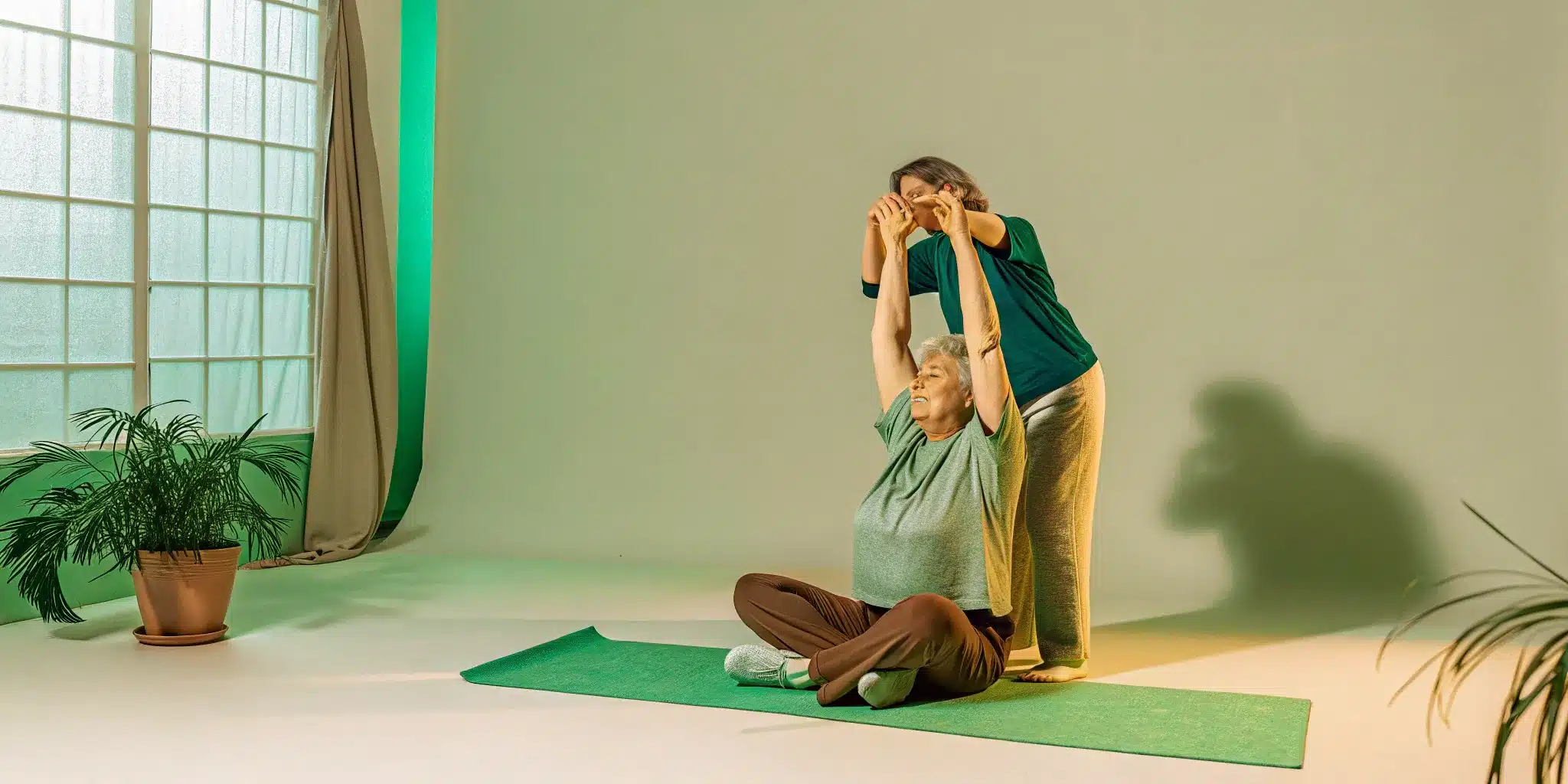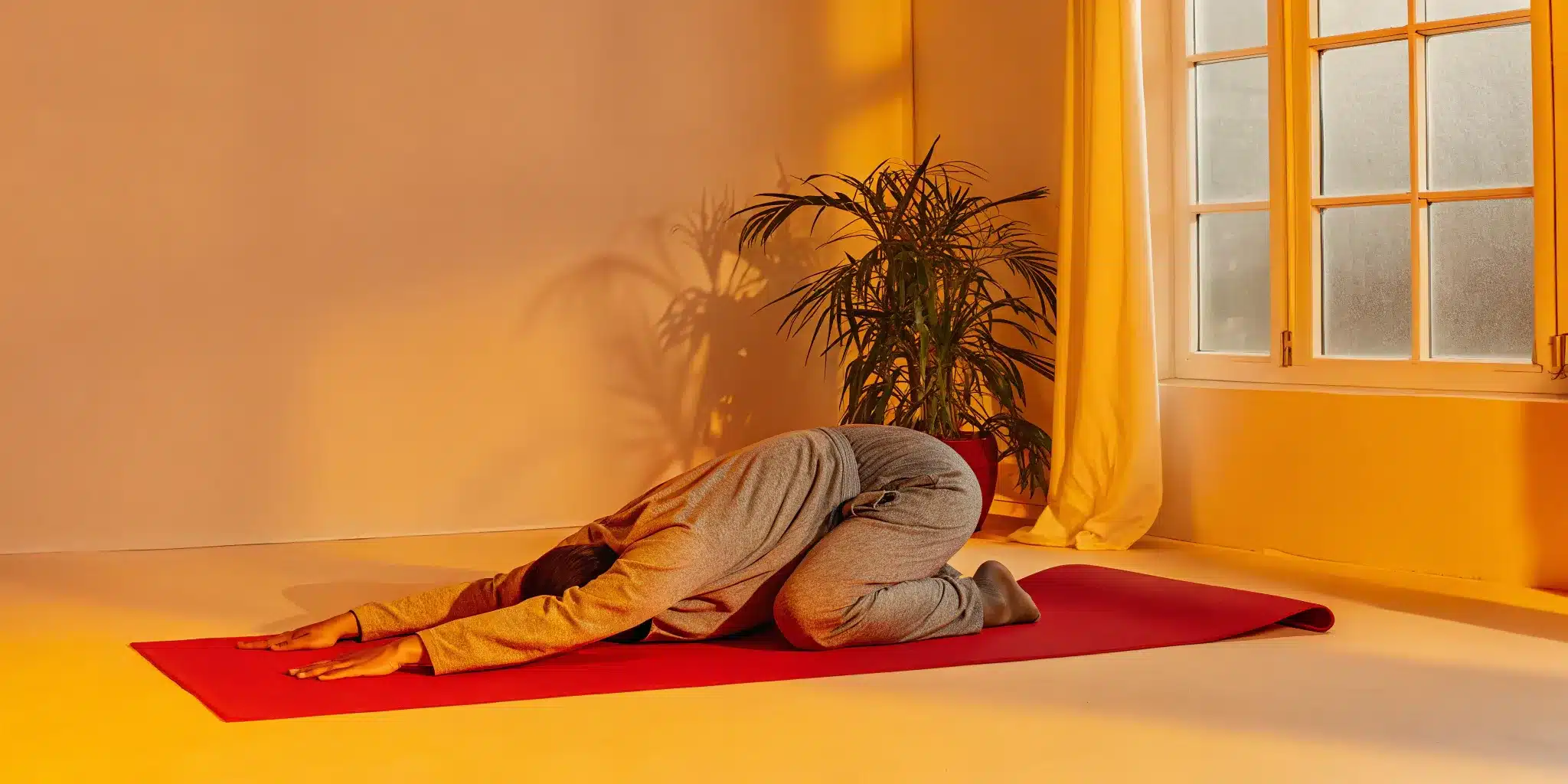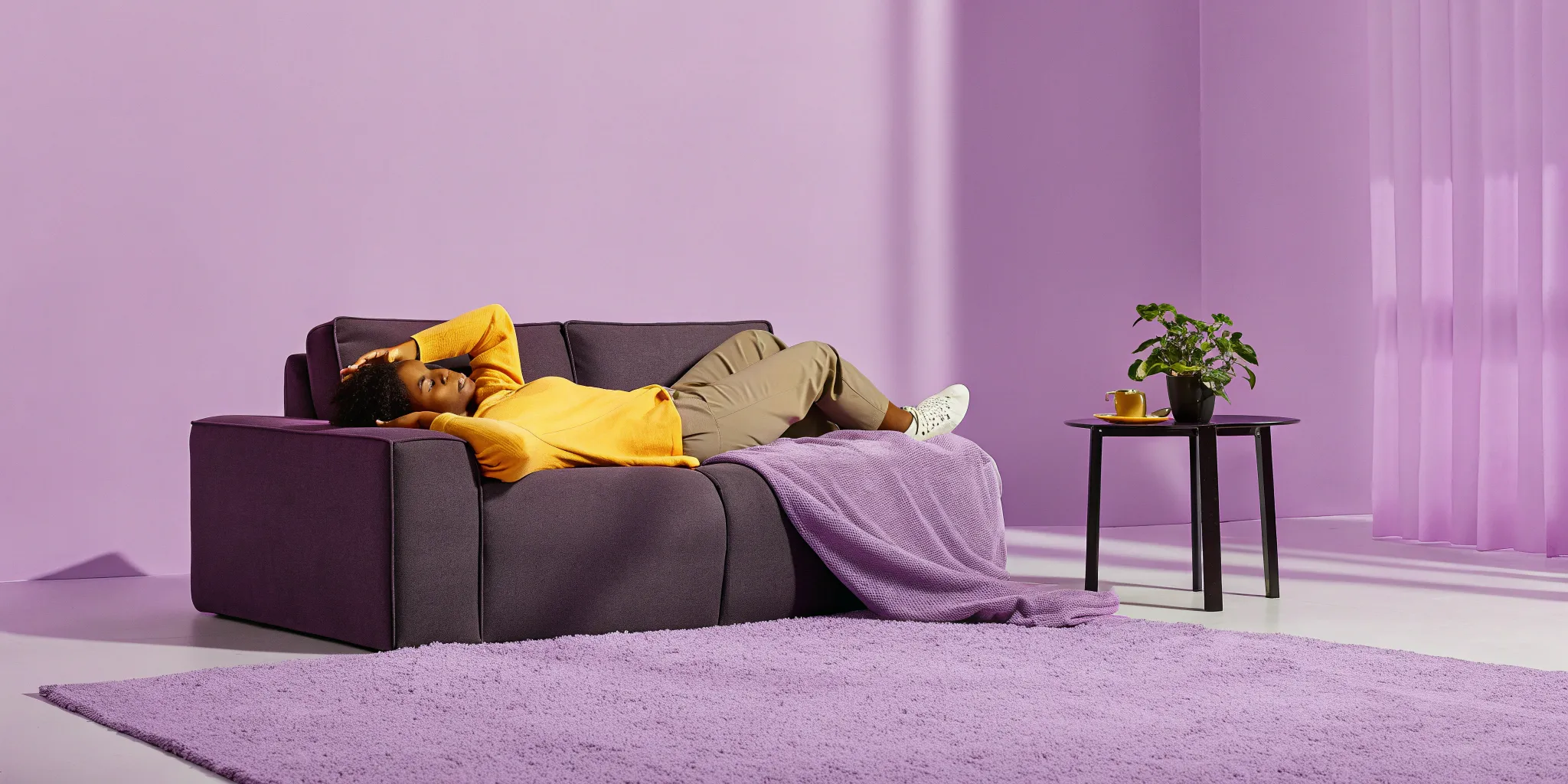If you’re looking for a way to manage persistent aches and improve your flexibility, the answer might lie in moving less—at least on your own. The benefits of movement for joint health and circulation are well-known, but pain can make active stretching feel impossible. This is where passive range of motion comes in. By allowing a trained professional to guide your limbs through their natural movements, you can achieve a deep, effective stretch without triggering your body’s pain responses. This process helps improve blood flow, prevent joint stiffness, and calm your nervous system, creating the ideal conditions for your body to heal and feel better.
Key Takeaways
- Let an Expert Do the Work to Relieve Pain: Passive range of motion is when a professional moves your joints for you. It’s a powerful way to manage stiffness and discomfort without any effort on your part, allowing your body to move freely and safely.
- Prioritize Safe Movement Over Deep Stretches: The goal of passive movement is gentle motion, not intense stretching. Always stop before you feel pain. Working with a specialist ensures your joints are properly supported and you stay within a safe, effective range.
- Make Consistency Your Goal for Lasting Mobility: The real benefits come from making passive movement a regular habit. Short, consistent sessions are more effective than occasional long ones for maintaining joint health, preventing stiffness, and improving your freedom of movement over time.
What Is Passive Range of Motion?
Think about lifting your arm to wave hello. Your muscles did that work. Now, imagine a therapist gently lifting your arm for you while you relax. That’s passive range of motion (PROM). It’s the movement of your joints, but without you having to engage your own muscles. Instead, an external force—like a trained stretch professional, a physical therapist, or even a specific machine—moves the body part for you. This technique is a cornerstone of physical therapy and assisted stretching because it allows your joints to move through their full range without strain. It’s a gentle way to maintain flexibility, reduce stiffness, and support your body’s natural healing process, especially if you’re dealing with pain, injury, or limited mobility.
Passive vs. Active Range of Motion: What’s the Difference?
It’s easy to get these two terms mixed up, but the distinction is simple. Active Range of Motion (AROM) is when you use your own muscle power to move a part of your body. Think about bending your knee, shrugging your shoulders, or turning your head—if you’re doing it yourself, it’s active. Passive Range of Motion (PROM), on the other hand, is when someone or something else moves a part of your body for you. You stay relaxed and let them do the work. The core difference between passive and active range of motion lies in which muscles are firing. With AROM, it’s yours; with PROM, you’re letting an external force take over.
How Your Joints Are Designed to Move
Every joint in your body, from your shoulder to your ankle, has a specific way it’s meant to move. The full extent of that movement is called its range of motion (ROM). Your personal ROM is unique and can be influenced by factors like your anatomy, flexibility, and any injuries you might have. For example, some people can easily touch their toes, while others might only reach their shins. Neither is right or wrong; it’s just a measure of your body’s current capacity. Understanding your joints’ natural movement patterns is the first step in identifying limitations and working to improve your mobility and reduce discomfort over time.
The Building Blocks of Passive Movement
So, why would you want someone else to move your limbs for you? The goal of passive movement is to gently encourage your joints and muscles to stay healthy and mobile, especially when you can’t move them yourself due to pain or injury. PROM helps prevent stiffness in the joints and keeps surrounding muscles from becoming tight or shortened from lack of use. It’s a supportive therapy that promotes blood flow, aids in healing, and maintains flexibility without putting stress on your body. Think of it as a way to remind your joints what they’re capable of, even when they need a little extra help.
Who Benefits From Passive Range of Motion?
Passive range of motion (PROM) is a versatile technique that helps a wide variety of people feel and move better. It’s not just for those with serious medical conditions; it’s a valuable tool for anyone looking to maintain joint health, recover from an injury, or manage stiffness. From athletes fine-tuning their recovery to individuals healing after surgery, the applications are broad. If you experience stiffness, pain, or have trouble moving on your own, PROM can be a gentle yet powerful way to support your body. Let’s look at some of the specific groups who find significant relief and progress through these assisted movements.
Aiding Post-Surgery Recovery
If you’ve ever had surgery, you know how stiff and sore your body can feel afterward. Your natural instinct might be to stay as still as possible, but gentle movement is often a crucial part of healing. This is where passive range of motion comes in. After a procedure, especially on a joint like a knee or shoulder, a therapist or specialist will carefully move the joint for you. This process helps maintain joint flexibility and prevents the buildup of stiff scar tissue. By improving circulation to the area, PROM can also reduce swelling and deliver the nutrients your tissues need to repair themselves, all without putting any strain on your healing body.
Supporting Neurological Conditions
For individuals living with neurological conditions that affect muscle control, passive range of motion is essential for daily care. Conditions like a severe stroke, cerebral palsy, or multiple sclerosis can make it difficult or impossible to move certain parts of the body voluntarily. Without movement, joints can become rigid and muscles can shorten, a condition known as contracture. Passive movement exercises performed by a caregiver or professional help keep joints supple and muscles flexible. This not only reduces discomfort but also preserves the joint’s function, which is vital for long-term health and quality of life.
Assisting with Limited Mobility
Chronic pain, severe arthritis, or simply the effects of aging can lead to significantly limited mobility. When moving on your own is a challenge, your world can start to feel smaller. Passive range of motion offers a way to counteract the effects of being sedentary. Because the exercises are done for you, they allow you to experience movement without pain or effort. This is incredibly important for people with limited mobility who may be confined to a bed or chair. Regular PROM sessions can ease the stiffness that comes from inactivity, improve blood flow, and provide a sense of physical relief and well-being.
Improving Athletic Recovery and Injury Prevention
Athletes are always looking for ways to perform at their best and recover faster, and passive range of motion can be a key part of that process. After a tough workout or competition, assisted stretching can help muscles relax and cool down, potentially reducing soreness. It’s also a valuable tool for injury rehabilitation. When an athlete is hurt, PROM can be used to gently move the injured joint through its full range. This reminds the joint and surrounding muscles how to function correctly, prevents stiffness during the healing process, and helps ensure that flexibility isn’t lost while the body repairs itself.
Why Try Passive Range of Motion? The Benefits Explained
Passive range of motion might sound simple, but its effects on your body and mind are profound. When you’re in pain, your instinct is often to stay still, but that lack of movement can lead to more stiffness and discomfort. PROM offers a gentle solution to this cycle. By allowing a partner or a trained professional to carefully move your joints for you, you’re giving your body a chance to experience movement without the strain or effort that can trigger pain. It’s a way of communicating with your muscles and joints, reminding them of their natural, intended path.
This approach is incredibly effective because it bypasses the body’s protective responses, like muscle guarding, that often make active stretching difficult. Instead of fighting against your own body, you get to relax and let go. This process does more than just stretch your tissues; it helps reduce inflammation, improves circulation to bring healing nutrients where they’re needed most, and can even calm your nervous system. Whether you’re recovering from an injury, managing a chronic condition, or simply trying to ease persistent aches, incorporating passive movement can be a foundational step toward feeling better. It’s a practice that meets you where you are, offering a path to improved mobility and relief, one gentle movement at a time.
Find Relief and Manage Pain
When you’re dealing with chronic pain, the thought of moving a sore joint can be daunting. Passive movement offers a way to break this cycle. These gentle exercises help prevent the stiffness that sets in from inactivity and can relieve built-up tension in your muscles. By carefully moving a joint through its natural path, PROM essentially reminds the joint and the surrounding tissues how to function correctly without pain. This process can be incredibly soothing and is a foundational step in managing chronic pain and reducing discomfort over time. It allows you to maintain mobility without aggravating sensitive areas, helping your body heal.
Improve Your Circulation and Flexibility
Healthy circulation is key to feeling your best, especially when your body is healing. Passive range of motion exercises are a fantastic way to encourage blood flow, particularly to areas that are stiff or injured. As your joints are moved, blood carrying oxygen and vital nutrients is delivered to the cartilage and surrounding tissues, which helps keep them healthy and resilient. This improved circulation also helps maintain muscle flexibility and keeps your joints moving smoothly. Think of it as providing the internal nourishment your body needs to stay limber and mobile, supporting the health of your tissues from the inside out.
Prevent Muscle Atrophy
When we can’t move a part of our body due to injury, surgery, or a health condition, the muscles in that area can begin to weaken and shrink—a process called muscle atrophy. Passive range of motion is a powerful tool to counteract this. Even though you aren’t actively contracting the muscles yourself, the movement helps stimulate them and the nearby nerves. This gentle stimulation helps prevent muscles from becoming weaker, preserving their tone and making it easier to regain strength when you’re ready for active exercise again. It’s a crucial step in maintaining your body’s readiness for recovery.
Support Healthy, Mobile Joints
Our joints are designed to move, and inactivity can cause them to become stiff, rigid, and painful. Passive range of motion exercises are essential for people who have difficulty moving on their own because they keep the joints lubricated and functional. These movements help prevent joints from becoming stiff and can stop the development of contractures, where tissues become permanently tight and limit movement. By regularly taking your joints through their full, comfortable range, you’re investing in your long-term mobility and freedom of movement, ensuring they stay as healthy as possible for as long as possible.
Feel Better Mentally and Emotionally
The connection between our physical state and our mental well-being is undeniable. Being unable to move freely can be frustrating and isolating, impacting your overall quality of life. Passive range of motion offers more than just physical benefits; it provides a sense of relief and progress. The gentle, hands-on approach can be calming, and seeing your body move again, even with assistance, can restore a sense of hope and control. This positive mind-body connection is a crucial part of any healing or pain management journey, reminding you that progress is possible.
How to Perform Passive Range of Motion Exercises
Getting started with passive range of motion (PROM) exercises is straightforward, but the key is to move gently and intentionally. These movements are designed to be slow and controlled to avoid any strain. Whether a partner, caregiver, or therapist is assisting you, communication is essential. The goal is to move your joints through their natural range without any effort on your part. Think of it as letting someone else do all the work while your muscles stay relaxed. This process helps maintain flexibility and can provide significant relief from stiffness. Before you begin, make sure you’re in a comfortable and stable position, either lying down or sitting securely.
Use the Right Technique and Hand Placement
Proper support is the most important part of performing PROM exercises safely and effectively. When a partner is helping you, they should use a firm but gentle grip to guide your limbs. For example, when moving your arm, the ideal placement is for them to support you with one hand at your wrist and the other under your elbow. This two-point contact provides stability and ensures the joint is protected throughout the entire movement. The motion should always be smooth and slow, never forced. If you feel any pain, it’s a signal to stop immediately. The person assisting should pay close attention to your non-verbal cues as well.
Key Movements for Your Upper Body
Your shoulders, elbows, and wrists have a wide range of motion, and PROM exercises help maintain it. For the shoulder, key movements include moving the arm forward and up toward the ceiling (flexion) and then back down (extension). Moving the arm out to the side, away from your body, is called abduction, and bringing it back in is adduction. Your elbow joint primarily bends (flexion) and straightens (extension). Simple wrist movements involve bending it forward and backward and gently rotating it in circles. These foundational range of motion exercises are crucial for preventing stiffness in the upper body.
Key Movements for Your Lower Body
Just like your upper body, your legs benefit immensely from passive movement. For your hip and knee, a common exercise is to gently bend the knee toward your chest (hip and knee flexion) and then slowly straighten it back out (extension). To work the hip joint’s full range, your partner can carefully move your straight leg out to the side (abduction) and then back to the center (adduction). Ankle movements are also important; these include pointing your toes down (plantar flexion) and flexing them up toward your shin (dorsiflexion), as well as making gentle circles to keep the joint mobile and improve circulation.
What Equipment Do You Need?
The great thing about passive range of motion is that you don’t need any special equipment to get started. The exercises can be done on a comfortable surface like a bed, mat, or sturdy chair. The most valuable tool is knowledge. While you can learn the basics on your own, having a professional guide you is the best way to ensure you’re doing everything correctly and safely. A physical therapist or a trained stretch specialist can teach you or a family member the proper techniques. This professional guidance ensures each movement is tailored to your specific needs and limitations.
How Often and For How Long?
Consistency is more important than intensity when it comes to PROM. For most people, performing these exercises once or twice a day is an effective way to maintain joint health and prevent stiffness. Each movement should typically be repeated a few times—anywhere from 5 to 10 repetitions per joint is a good starting point. The entire session doesn’t have to be long; even 10 to 15 minutes of focused, gentle movement can make a world of difference. Listen to your body and focus on quality over quantity. The goal is to feel a gentle stretch, never pain.
How to Practice PROM Safely
Passive range of motion exercises are meant to be gentle and healing, so safety should always be your top priority. Whether you’re helping a loved one or receiving the exercises yourself, the key is to work with the body, not against it. Moving a joint beyond its comfortable limit can cause injury and setbacks. By following a few simple guidelines, you can ensure the experience is both safe and effective, helping to soothe joints and improve mobility without causing harm.
Prevent Common Risks
The most significant risk with passive movement is accidentally forcing a joint and causing damage. To prevent this, always move the limb slowly and smoothly. Avoid any quick or jerky motions, which can startle the muscles and lead to spasms or strain. Your goal is to gently guide the joint through its natural, pain-free range. Think of it as a quiet conversation with the body, not a command. Respecting the body’s limits is the most important part of the process, ensuring that each session is a positive step toward better movement.
Avoid These Common Mistakes
Two common mistakes can lead to injury: not providing enough support and pushing into pain. Always make sure the joint you are moving is properly supported with your hands or a soft surface. For example, when moving the knee, place one hand under the knee and the other under the ankle. This proper support prevents strain on the joint and surrounding tissues. Most importantly, never push to the point of pain. The old saying “no pain, no gain” does not apply here. If you or the person you’re helping feels discomfort, you’ve gone far enough.
Know the Warning Signs
Your body provides clear signals when a movement isn’t right. It’s crucial to pay attention to these warning signs. Stop immediately if you notice increased pain, sudden stiffness, or resistance during an exercise. Non-verbal cues are just as important—watch for facial grimacing, wincing, or the muscles tensing up around the joint. These are all signs that the body is protecting itself from a potentially harmful movement. Being an attentive and responsive partner in these exercises is key to keeping them safe and beneficial.
When to Stop or Change an Exercise
Knowing when to stop is just as important as knowing how to start. If you see any warning signs or if the person you’re assisting expresses discomfort, stop the exercise right away. Communication is essential. Always listen to feedback. If a particular movement causes pain, don’t try to push through it. You can either try a smaller, gentler version of the movement or move on to a different joint. If a joint shows signs of swelling, redness, or increased stiffness after a session, it’s best to hold off on exercises and consult a healthcare professional for guidance.
Why Work With a Specialist?
While a friend or family member can help with basic movements, working with a trained professional takes the benefits of passive range of motion to a whole new level. A specialist brings a deep understanding of anatomy, kinesiology, and how the body is meant to move. They can accurately assess your current range of motion, identify specific areas of tightness or restriction, and create a session tailored to your body’s unique needs. This isn’t a one-size-fits-all routine; it’s a personalized approach designed to help you make real progress safely.
An expert knows how to move your joints in just the right way to encourage flexibility without pushing past your limits and causing injury. They can also spot subtle imbalances or issues you might not be aware of and adjust the session accordingly. This expert guidance ensures you get the most out of every movement, helping you manage pain, improve mobility, and feel better in your body more effectively than you could on your own.
Who Can Help? Types of Professionals
Several types of professionals are qualified to perform passive range of motion exercises. Physical therapists (PTs) and occupational therapists (OTs) are highly trained clinical experts who often use PROM as part of a larger rehabilitation plan for injuries or medical conditions. A physical therapist will first assess your condition to ensure these exercises are appropriate for you. You can also work with certified stretch practitioners or therapists, who specialize in one-on-one assisted stretching to improve flexibility, relieve tension, and enhance overall mobility in a wellness setting. Each professional brings a unique skill set, so the right choice depends on your personal goals.
What to Expect During Your Session
Your first session should be a comfortable and relaxing experience. You’ll typically lie on a padded table or mat, fully clothed. Your specialist will talk you through the process and encourage you to relax and breathe as they do all the work. They will support your limbs and gently move each joint through its natural path of movement—flexing, extending, and rotating it slowly and smoothly. The goal is to move the joint as far as it can go without causing any pain or discomfort. The entire process is designed to prevent muscles from shortening and joints from becoming stiff, leaving you feeling looser and more mobile.
How to Find a Qualified Professional
Finding the right specialist starts with a little research. Your doctor or primary care provider is a great resource for a referral, especially if you’re recovering from an injury. You can also search online for local physical therapy clinics or specialized stretch studios. Look for professionals with certifications and positive client reviews. Most importantly, find someone you feel comfortable communicating with. You should feel empowered to ask questions and give feedback during your session to ensure the pressure and movements are right for your body. A good specialist will always prioritize your comfort and safety.
Will Insurance Cover Your Sessions?
Whether your sessions are covered by insurance depends on your plan and the reason you’re seeking treatment. If passive range of motion is part of a prescribed physical therapy plan to recover from an injury, surgery, or a medical condition like a stroke, it is often covered. This is especially true in cases where a person is unable to perform the exercises independently. However, sessions for general wellness, fitness, or athletic performance at a stretch studio are typically not covered. The best course of action is to call your insurance provider directly to ask about your specific benefits for physical or manual therapy.
Ready to Start? Here’s How.
Taking the first step toward better mobility can feel like a big deal, but it doesn’t have to be complicated. Incorporating passive range of motion into your life is about making small, consistent efforts that add up over time. Think of it as a gentle conversation with your body, helping it remember how to move freely and without pain. The key is to start smart and build a foundation that supports your long-term well-being. By creating a simple plan, you can begin to reclaim your movement and find relief. Here are four practical steps to get you started on the right path.
Create a Consistent Routine
When it comes to passive range of motion, consistency is your best friend. Just like any healthy habit, the real magic happens when you make it a regular part of your day. Performing these movements consistently helps prevent joint stiffness and gently reminds your muscles and connective tissues how to move through their full range. Establishing a routine is essential for maximizing the benefits of these exercises. Try to find a time that works for you, whether it’s first thing in the morning to ease stiffness or in the evening to unwind. The goal is to make it feel like a natural, non-negotiable part of your self-care.
Track Your Progress
How do you know if what you’re doing is working? You track it. Keeping a simple log of your sessions can be incredibly motivating and insightful. You don’t need a fancy app; a simple notebook or a note on your phone will do. Jot down which exercises you did, how your joints felt, and any changes you notice in your pain or mobility levels. This record isn’t just for you—it’s valuable information you can share with your physical therapist or stretch specialist. It helps you see how far you’ve come and allows you to adjust your routine as needed to keep making progress.
Build Your Support System
You don’t have to figure this all out on your own. In fact, you shouldn’t. Working with professionals is crucial for practicing passive range of motion safely and effectively. A physical therapist or a certified stretch practitioner can assess your specific needs, show you the proper techniques, and create a personalized plan. Collaborating with healthcare professionals provides guidance and ensures you’re doing what’s best for your body. Having an expert in your corner not only keeps you safe but also provides the encouragement you need to stick with it.
Set Realistic, Achievable Goals
It’s easy to get frustrated if you expect overnight results. Instead, focus on setting small, realistic goals that you can celebrate along the way. Maybe your goal is to reach a cup on a high shelf without shoulder pain, or simply to get through the day with less stiffness. These achievable milestones make the process feel more manageable and rewarding. Setting realistic goals is a powerful motivator that can make your routine more effective and improve your overall quality of life. Remember, this is a marathon, not a sprint. Every small improvement is a victory worth acknowledging.
Related Articles
- StretchMed 1-on-1 Assisted Stretching for Pain & Mobility
- STRETCHMED – Committed To Helping You Move Well
- StretchMED Kent Island – STRETCHMED
- StretchMED First Time Experience – STRETCHMED
- StretchMED Parker – COMING SOON! – STRETCHMED
Frequently Asked Questions
Is passive range of motion the same thing as stretching? That’s a great question, as the two are closely related but serve different purposes. Think of passive range of motion as being focused on the joint. The goal is to move a joint, like your shoulder or hip, through its entire natural path of movement to keep it lubricated and mobile. While this does create a gentle stretch in the muscles, traditional stretching often involves holding a position for a longer period to specifically lengthen muscle tissue. PROM is more about maintaining joint health and function through movement.
Can I do these exercises on myself? By definition, passive range of motion requires an external force to move your body while your own muscles stay completely relaxed. Because of this, you can’t really perform it on yourself. If you use your other arm to move an injured arm, for example, other muscles in your body are still actively working to create that movement. To get the true benefits, you need a partner, therapist, or trained specialist to guide your limbs for you.
Should passive range of motion feel painful? Absolutely not. The entire process should be gentle and stay within a comfortable range. You might feel a light sensation of a stretch or an awareness of movement in a stiff joint, but you should never feel sharp, shooting, or significant pain. Pain is your body’s signal to stop. A trained professional will be especially skilled at reading your body’s cues to ensure the movement is always helpful, not harmful.
Will this make my muscles stronger? Passive range of motion is not a strength-building exercise. Its primary goals are to maintain joint mobility, improve flexibility, and prevent muscles from weakening when you can’t move them on your own. Because your muscles are relaxed during the exercises, they aren’t actively contracting, which is what’s needed to build strength. Think of it as preserving what you have and preparing your body to build strength later, once you’re ready for active movement.
How do I know if I need passive or active range of motion? The right choice really depends on your body’s current abilities and your goals. If you are unable to move a joint on your own due to pain, injury, or a medical condition, passive range of motion is the ideal starting point. It allows you to maintain mobility without any strain. Active range of motion is what you do when you are able to use your own muscle power to move. A physical therapist or stretch specialist can help you determine which approach is right for you.

